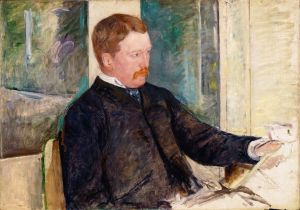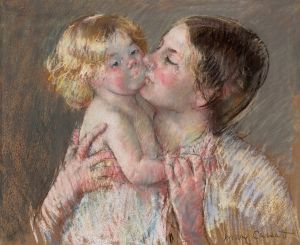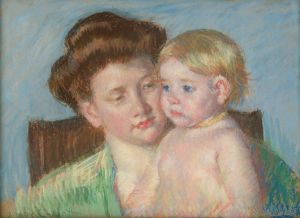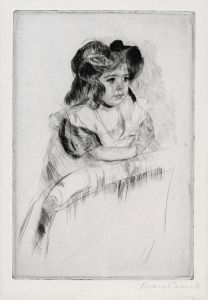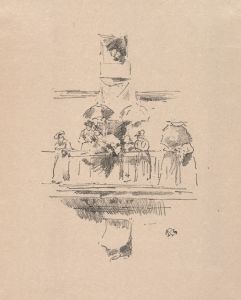
On a Balcony
A hand-painted replica of Mary Cassatt’s masterpiece On a Balcony, meticulously crafted by professional artists to capture the true essence of the original. Each piece is created with museum-quality canvas and rare mineral pigments, carefully painted by experienced artists with delicate brushstrokes and rich, layered colors to perfectly recreate the texture of the original artwork. Unlike machine-printed reproductions, this hand-painted version brings the painting to life, infused with the artist’s emotions and skill in every stroke. Whether for personal collection or home decoration, it instantly elevates the artistic atmosphere of any space.
"On a Balcony" is a painting by the American artist Mary Cassatt, created in 1878-79. Cassatt, who was born in 1844 in Allegheny City, Pennsylvania, is renowned for her contributions to the Impressionist movement and her focus on the lives of women and children. She spent much of her professional life in France, where she became closely associated with the Impressionists, particularly Edgar Degas.
"On a Balcony" depicts a scene of two women and a child on a balcony, with a view of the Parisian cityscape in the background. The painting is notable for its use of light and color, characteristic of the Impressionist style. Cassatt's brushwork captures the fleeting effects of light and atmosphere, a hallmark of the movement. The figures are rendered with a sense of intimacy and immediacy, reflecting Cassatt's interest in the private lives of women and children.
The composition of "On a Balcony" is carefully balanced, with the figures arranged in a triangular formation that draws the viewer's eye around the canvas. The balcony railing serves as a horizontal anchor, while the vertical lines of the buildings in the background provide a sense of depth and perspective. Cassatt's use of color is both subtle and sophisticated, with a palette dominated by soft blues, greens, and pinks that create a harmonious and tranquil scene.
Cassatt's work often explored themes of domesticity and the everyday lives of women, and "On a Balcony" is no exception. The painting captures a moment of quiet contemplation and leisure, with the figures seemingly absorbed in their own thoughts. This focus on the inner lives of her subjects was a departure from the more traditional, formal portraits of the time and helped to establish Cassatt as a pioneering figure in the art world.
Mary Cassatt's association with the Impressionists began in the late 1870s, and she exhibited with the group in four of their eight exhibitions. Her work was well-received by her peers, and she became one of the few American artists to gain recognition in the predominantly French movement. Cassatt's friendship with Degas was particularly influential, and the two artists often exchanged ideas and techniques.
"On a Balcony" is housed in the Art Institute of Chicago, where it remains an important part of the museum's collection. The painting is celebrated for its technical skill, emotional depth, and its contribution to the broader narrative of Impressionist art. Cassatt's ability to capture the subtleties of human experience and her innovative approach to composition and color continue to be admired by art historians and enthusiasts alike.
Mary Cassatt's legacy as a trailblazing artist who challenged traditional gender roles and brought a fresh perspective to the depiction of women and children endures to this day. "On a Balcony" stands as a testament to her talent and her unique vision, offering viewers a glimpse into the quiet moments of everyday life through the eyes of one of the most important artists of the 19th century.






